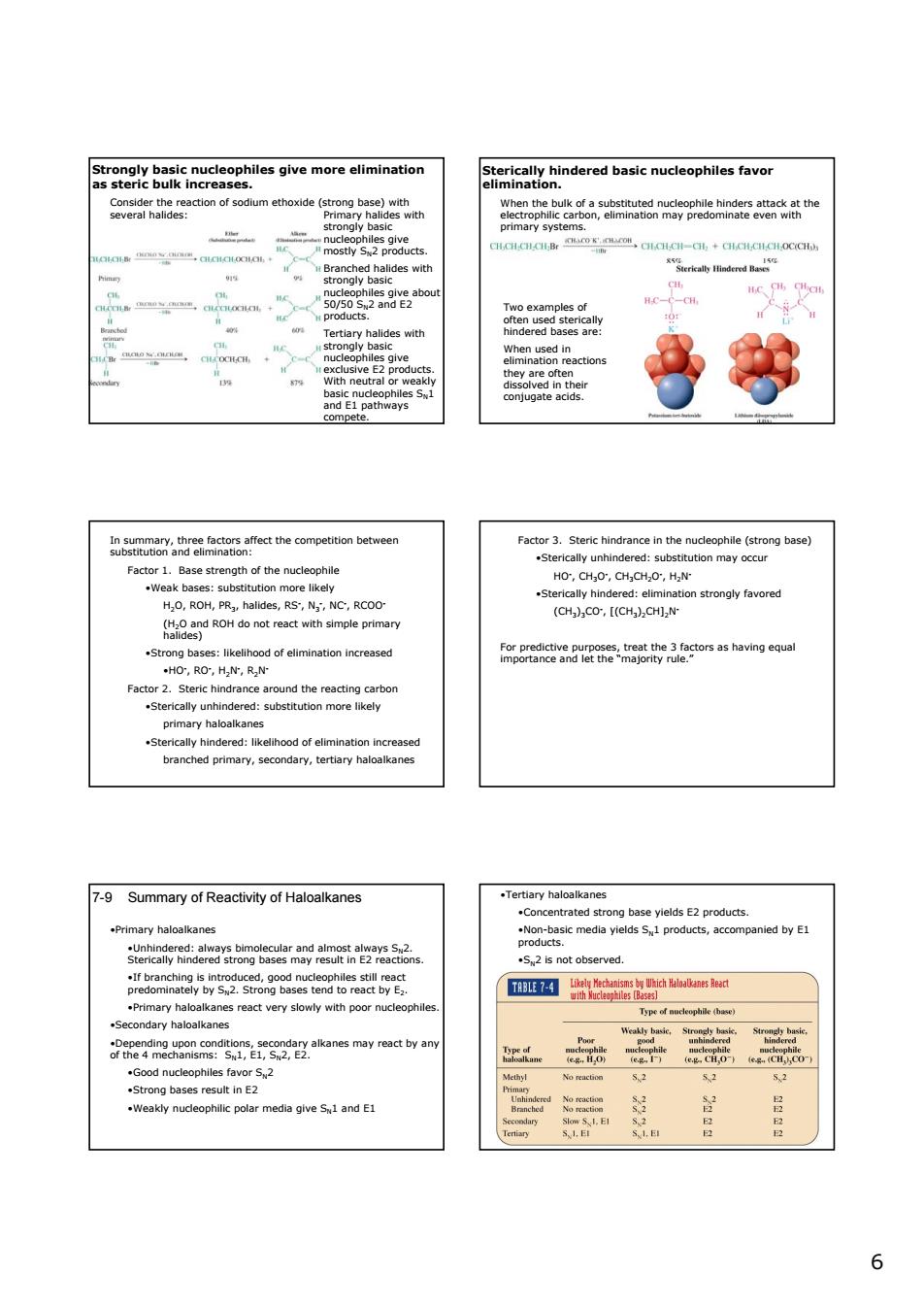正在加载图片...

Strongly basic nucleophiles give more elimination basic nucleophiles favor 50/50 S2 ang WC-C hmarhaactcafactthecompetitonbot Factor 1.Bas of the nuclecohil (CH.)CO.[(CH)CH]N fpnecgR:e36ctorsashavngequan 7-9 Summary of Reactivity of Haloalkanes Primary 6 6 Strongly basic nucleophiles give more elimination as steric bulk increases. Consider the reaction of sodium ethoxide (strong base) with several halides: Primary halides with strongly basic nucleophiles give mostly SN2 products. Branched halides with strongly basic nucleophiles give about 50/50 SN2 and E2 products. Tertiary halides with strongly basic nucleophiles give exclusive E2 products. With neutral or weakly basic nucleophiles SN1 and E1 pathways compete. Sterically hindered basic nucleophiles favor elimination. When the bulk of a substituted nucleophile hinders attack at the electrophilic carbon, elimination may predominate even with primary systems. Two examples of often used sterically hindered bases are: When used in elimination reactions they are often dissolved in their conjugate acids. In summary, three factors affect the competition between substitution and elimination: Factor 1. Base strength of the nucleophile •Weak bases: substitution more likely H2O, ROH, PR3, halides, RS- , N3 - , NC- , RCOO- (H2O and ROH do not react with simple primary halides) •Strong bases: likelihood of elimination increased •HO- , RO- , H2N- , R2NFactor 2. Steric hindrance around the reacting carbon •Sterically unhindered: substitution more likely primary haloalkanes •Sterically hindered: likelihood of elimination increased branched primary, secondary, tertiary haloalkanes Factor 3. Steric hindrance in the nucleophile (strong base) •Sterically unhindered: substitution may occur HO- , CH3O- , CH3CH2O- , H2N- •Sterically hindered: elimination strongly favored (CH3)3CO- , [(CH3)2CH]2NFor predictive purposes, treat the 3 factors as having equal importance and let the “majority rule.” 7-9 Summary of Reactivity of Haloalkanes •Primary haloalkanes •Unhindered: always bimolecular and almost always SN2. Sterically hindered strong bases may result in E2 reactions. •If branching is introduced, good nucleophiles still react predominately by SN2. Strong bases tend to react by E2. •Primary haloalkanes react very slowly with poor nucleophiles. •Secondary haloalkanes •Depending upon conditions, secondary alkanes may react by any of the 4 mechanisms: SN1, E1, SN2, E2. •Good nucleophiles favor SN2 •Strong bases result in E2 •Weakly nucleophilic polar media give SN1 and E1 •Tertiary haloalkanes •Concentrated strong base yields E2 products. •Non-basic media yields SN1 products, accompanied by E1 products. •SN2 is not observed